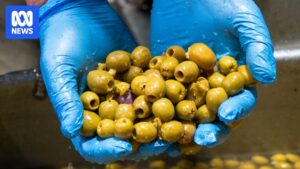
TikTok and Instagram, the social media platforms that have long celebrated “protein goals,” are now seeing a shift towards “fibre goals.” This trend reflects a broader movement towards holistic health and wellbeing, moving away from a narrow focus on weight loss or muscle gain.
Fibre-rich foods are among the healthiest options available. A diet lacking in fibre can lead to constipation, haemorrhoids, and an increased risk of chronic diseases such as heart disease, type 2 diabetes, and bowel cancer. So, what does expert evidence say about setting “fibre goals” and how can individuals achieve them?
Understanding Dietary Fibre
Dietary fibres are the indigestible parts of plant foods. Unlike other carbohydrates that break down into sugar, these complex carbs pass through the digestive tract largely unchanged. There are two primary types of dietary fibre: soluble and insoluble.
Soluble vs. Insoluble Fibre
Soluble fibres dissolve in water to form gel-like substances. They are found in fruits such as apples and berries, vegetables like sweet potatoes and carrots, as well as legumes and oats. Soluble fibres can slow digestion, help us feel fuller longer, support heart health, lower blood cholesterol, and regulate blood sugar levels.
Insoluble fibres do not dissolve in water but add bulk to food. Sources include wheat bran, fruit and vegetable skins, nuts, seeds, beans, and whole grain foods. Insoluble fibres help regulate bowel movements and reduce constipation.
Additionally, resistant starch is a type of complex carbohydrate that behaves like fibre, resisting digestion and feeding gut bacteria. It is found in legumes, cooked potatoes, and undercooked pasta.
Unlike many fibre supplements, which often only offer one type of fibre, most sources of dietary fibre contain both soluble and insoluble forms.
The Benefits of Fibre
Both soluble and insoluble fibres are beneficial for gut and overall health. They can be fermented by good gut bacteria, although soluble fibres and resistant starches tend to ferment more readily. Our gut bacteria rely on fermenting these fibres as fuel to help digest foods, fight pathogenic microbes, and improve physical and mental health.
Setting and Achieving Fibre Goals
Without a quick lab test to measure fibre intake, a simple indicator is how well one’s digestion works. If constipation is rare, fibre intake is likely sufficient. The National Health and Medical Research Council recommends daily fibre intakes that vary by age and gender. Generally, adult men should aim for about 30 grams of fibre per day, while women should aim for about 25 grams.
It’s hard to have too much dietary fibre; even eating 50g per day is not considered harmful.
To meet these goals without overthinking, focus on foods rich in fibre such as fruits, vegetables, nuts, seeds, legumes, beans, and wholegrain or wholemeal breads and cereals. Variety is key to prevent dietary monotony.
Practical Tips for Increasing Fibre Intake
The Australian Dietary Guidelines suggest a daily intake of:
- Two serves of medium-sized fruits
- Five serves of vegetables (one serve is half a cup of cooked veggies or one cup of salad greens)
- Two to three serves of nuts and seeds (one serve is about 30g or a handful) or two to three serves of legumes/beans (one serve is a cup of cooked beans, lentils, chickpeas, split peas)
Avoiding Common Pitfalls
Here are some important things to remember:
- Avoid drastic changes such as cutting out entire food groups unless advised by a health practitioner.
- Do not focus on just one type of fibre. Each has different benefits, so incorporating both is best.
- Avoid a sudden increase in fibre, which can cause abdominal pain and increased flatulence. Gradually add high-fibre foods over a few weeks.
- Fibre needs water to work effectively, so drink plenty of fluids. Aim for at least eight to ten glasses of water per day.
Embracing Fibre Goals Naturally
Eating well doesn’t need to be a competition. While it’s great that people are sharing ideas on social media about increasing fibre intake, it’s important to do so without obsessing over food. Focus on gradual changes and incorporating fibre-rich foods naturally into your diet.
Simple switches can make a significant difference. For example, swap refined grain products like white rice or white bread for wholemeal or wholegrain varieties. If you enjoy breakfast cereals, choose one with at least 5g of fibre per serve by checking the nutrition panel on the packet.
Finally, listen to your body. If you experience any digestive discomfort or have conditions like irritable bowel syndrome that require managing fibre intake, consult with a healthcare professional.
This material from The Conversation has been edited for clarity, style, and length. Mirage.News does not take institutional positions or sides, and all views, positions, and conclusions expressed herein are solely those of the author(s).







